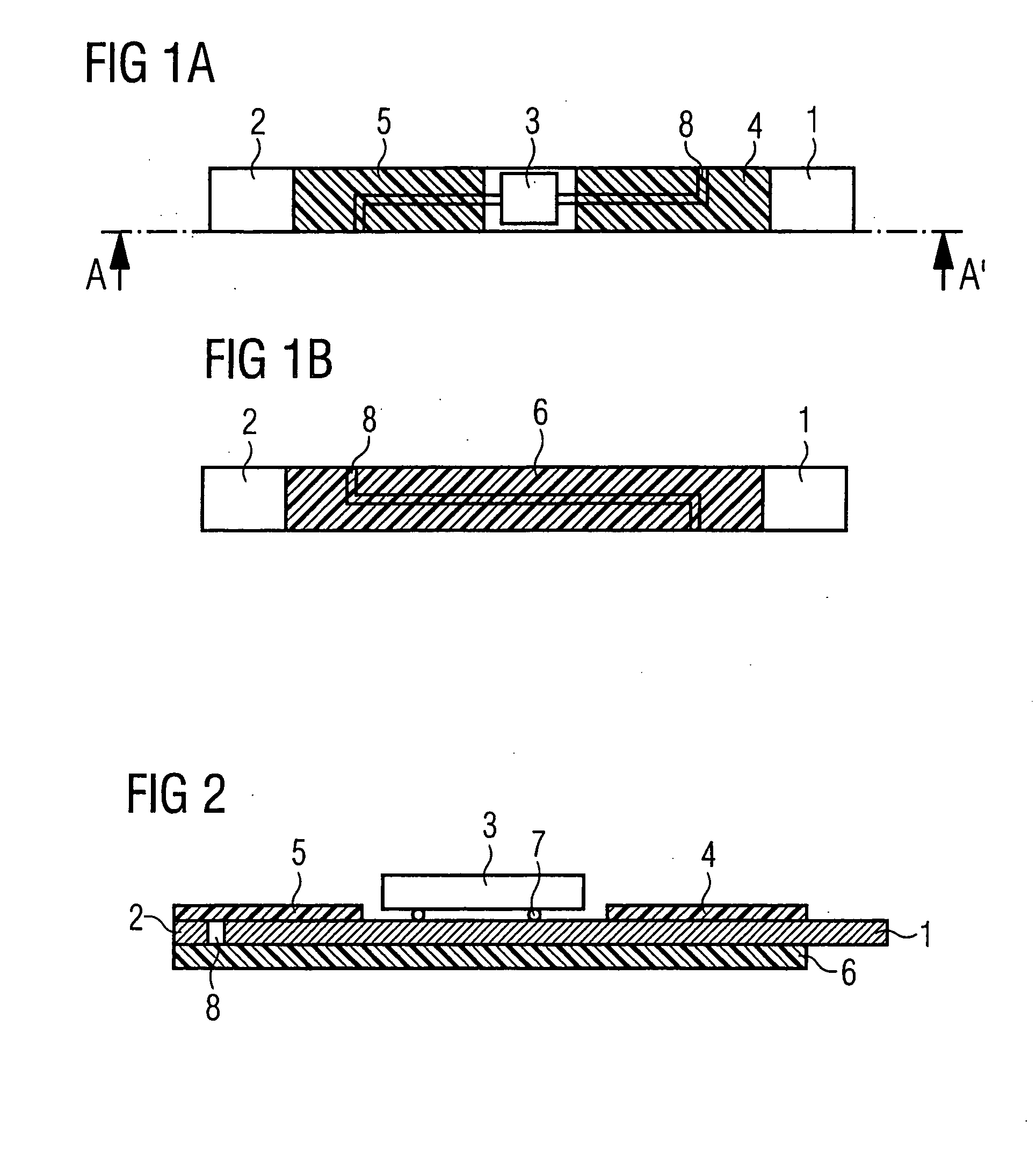Module for contactless chip cards or identification systems
a technology of contactless chip cards and modules, applied in semiconductor devices, semiconductor/solid-state device details, instruments, etc., can solve the problem that the acrylate film required for fixing contributes directly to the total thickness of the module, and achieves the effect of sufficient robustness and stability
- Summary
- Abstract
- Description
- Claims
- Application Information
AI Technical Summary
Benefits of technology
Problems solved by technology
Method used
Image
Examples
Embodiment Construction
[0024]FIG. 1A illustrates a diagrammatic plan view of the front surface of a module configured in accordance with the invention, revealing a first antenna contact strip 1 and a—-second antenna contact strip 2. The first antenna contact strip 1 and the second antenna contact strip 2 are in each case composed of a wide antenna connection zone and a narrow, finger-shaped chip land zone, the chip land zone being longer than the antenna connection zone.
[0025] The first antenna contact strip 1 and the second antenna contact strip 2 are arranged in such a way that the chip land zone of the first antenna contact strip 1 and the chip land zone of the second antenna contact strip 2 are located next to one another and run parallel over their length. A spacing 8 is formed between the first antenna contact strip 1 and the second antenna contact strip 2.
[0026] A semiconductor chip 3, which extends from the chip land zone of the first antenna contact strip 1 to the chip land zone of the second a...
PUM
 Login to View More
Login to View More Abstract
Description
Claims
Application Information
 Login to View More
Login to View More - R&D
- Intellectual Property
- Life Sciences
- Materials
- Tech Scout
- Unparalleled Data Quality
- Higher Quality Content
- 60% Fewer Hallucinations
Browse by: Latest US Patents, China's latest patents, Technical Efficacy Thesaurus, Application Domain, Technology Topic, Popular Technical Reports.
© 2025 PatSnap. All rights reserved.Legal|Privacy policy|Modern Slavery Act Transparency Statement|Sitemap|About US| Contact US: help@patsnap.com


